In the dynamic realm of nanomaterials, electrospun nanofibers have emerged as a transformative force, representing a pinnacle in nanoscale engineering. Leveraging an innovative fabrication process, these nanofibers have found applications across various domains, showcasing their prowess in filtration, tissue engineering, and wearable technologies..
Fabrication of Electrospun Nanofibers: A Ballet of Forces and Polymers
Electrospinning, often likened to a delicate ballet of forces and polymers, is an intricate nanofiber fabrication process that harmonizes material selection, solution properties, and electrostatic forces to produce structures at the nanoscale. Understanding the nuanced interplay of these factors is crucial to mastering the art of electrospinning.
Polymer Selection: Crafting the Essence of Nanofibers
Polymer Diversity: The heart of electrospinning lies in the choice of polymers, which can range from synthetic, such as polyvinyl alcohol (PVA) and polycaprolactone (PCL), to natural counterparts like gelatin or chitosan. Each polymer contributes unique properties to the resulting nanofiber.
Functional Considerations: Polymers are selected based on the intended application. For example, biocompatible polymers are favored in tissue engineering applications, while hydrophobic polymers might be chosen for filtration purposes.
Solution Formulation: Polymers are dissolved or melted to form a solution that is suitable for electrospinning. Solvent choice is critical, influencing the viscosity and volatility of the solution, which, in turn, affects the morphology of the resulting nanofibers.
Electrospinning Parameters: The Dance of Precision
Voltage Control: The electrospinning process involves the application of an electric field between a charged polymer solution at the spinneret and a grounded collector. Voltage controls the electrostatic forces acting on the polymer, influencing the stretching and thinning of the emerging nanofibers.
Flow Rate Management: The rate at which the polymer solution is extruded (flow rate) plays a pivotal role. It determines the diameter and morphology of the nanofibers, with higher flow rates generally resulting in thicker fibers.
Distance Dynamics: The distance between the spinneret and collector is a critical parameter. It impacts the flight time of the ejected polymer solution, affecting the drying process and the final alignment and deposition of nanofibers on the collector.
Polymer Blends and Hybrid Nanofibers: Symphony of Multifunctionalit
Tailoring Properties: Polymer blends, achieved by combining different polymers or incorporating additives, allow for the tailoring of nanofiber properties. This blending creates hybrid nanofibers with synergistic characteristics, such as enhanced mechanical strength, improved biocompatibility, or specific chemical reactivity.
Multifunctional Applications: Hybrid nanofibers often find applications across multiple domains. For instance, blending a conductive polymer with a biocompatible polymer could result in nanofibers suitable for both tissue engineering and electronic applications.
Temperature and Humidity Control: Orchestrating the Nanofiber Environment
Drying Dynamics: Temperature and humidity conditions during electrospinning influence the drying rate of the polymer solution, affecting the morphology and alignment of the nanofibers. Controlling these parameters is essential for reproducibility and uniformity in nanofiber production.
Environmental Considerations: Elevated temperatures can impact the solvent evaporation rate, potentially leading to bead formation or irregularities in nanofiber morphology. Optimal temperature and humidity control are vital for achieving desired nanofiber characteristics.
Hardware and Software Required
The orchestration of these technological components is essential for precise control, reproducibility, and innovation in the fabrication of electrospun nanofibers.
Spinneret Design and Material Selection: Crafting the First Movement
Material Compatibility: The spinneret, the device from which the polymer solution is ejected, must be carefully designed to ensure compatibility with the chosen polymer and solvent. Materials with low surface energy, such as stainless steel or coated surfaces, are often preferred to facilitate smooth polymer flow.
Spinneret Geometry: The geometry of the spinneret, including the size and shape of the orifice, influences the diameter and uniformity of the resulting nanofibers. Precise control over these parameters is achieved through advanced machining techniques.
High-Voltage Power Supplies: The Conductor of Electric Elegance
Voltage Control: High-voltage power supplies, typically in the range of several kilovolts, are employed to create the electric field necessary for the electrospinning process. These power supplies must provide stable voltages to ensure a consistent and controlled electrostatic force acting on the polymer solution.
Polarity Management: Polarity control is crucial in determining the direction in which the nanofibers are spun. Depending on the setup, positive or negative polarity can be applied to the spinneret and collector, influencing the alignment and deposition of nanofibers.
Syringe Pumps: Precision in Flow Harmony
Flow Rate Adjustment: Syringe pumps are used to precisely control the rate at which the polymer solution is extruded from the spinneret. This automation ensures a constant flow rate, impacting the diameter and morphology of the electrospun nanofibers.
Programmable Operation: Advanced syringe pumps are equipped with programmable features, enabling researchers to experiment with different flow rates and patterns for optimal nanofiber production.
Collectors and Rotating Drums: The Dance Floor for Nanofiber Deposition
Collector Design: The collector, often a grounded plate or rotating drum, plays a pivotal role in collecting and aligning the electrospun nanofibers. The choice of collector geometry and motion influences the alignment and density of the deposited nanofibers.
Controlled Rotation: Rotating drum collectors provide a dynamic environment for nanofiber deposition, allowing for more uniform alignment and controlled fiber packing. The rotational speed of the drum is a critical parameter in this process.
Temperature and Humidity Control Systems: Creating the Ideal Atmosphere
Environmental Chambers: Controlled temperature and humidity environments are crucial for electrospinning. Specialized chambers or enclosures maintain stable conditions, preventing variations that could affect the drying rate of the polymer solution and the morphology of the resulting nanofibers.
Data Acquisition and Control Systems: Harmonizing the Process
Monitoring and Feedback: Integrated data acquisition systems continuously monitor key parameters such as voltage, flow rate, and environmental conditions. Real-time feedback enables researchers to make adjustments and maintain precise control over the electrospinning process.
Automation Software: Advanced electrospinning setups are often paired with automation software, allowing for programmable control of the entire process. This includes the ability to create complex nanofiber patterns and structures.
Safety Systems: Ensuring a Secure Performance
Emergency Shutdowns: Safety features, such as emergency shutdown mechanisms, are integrated to safeguard against unforeseen events. These systems can prevent accidents and ensure the well-being of researchers and the integrity of the electrospinning setup.
Applications of Electrospun Nanofibers: A Tapestry of Possibilities
Filtration Revolution:
High Surface Area: The ultrafine structure and high surface area of electrospun nanofibers make them ideal for efficient air and liquid filtration systems.
Applications: From face masks and air purifiers to advanced water filtration devices, nanofiber-based filtration is at the forefront of combating airborne and waterborne contaminants.
Tissue Engineering Marvels:
Biomimetic Scaffolds: Electrospun nanofibers replicate the structure of the extracellular matrix, providing an optimal environment for cell adhesion, proliferation, and tissue regeneration.
Diverse Applications: Scaffolds for skin, bone, and nerve tissue regeneration exemplify the diverse applications in tissue engineering and regenerative medicine.
Wearable Technologies:
Smart Textiles: The lightweight and breathable nature of electrospun nanofibers makes them ideal for integration into smart textiles.
Health Monitoring: Nanofiber-based textiles can be embedded with sensors, creating wearable technologies for continuous health monitoring and interactive clothing.
Drug Delivery Innovations:
Controlled Release: Electrospun nanofibers serve as effective carriers for controlled drug delivery, ensuring sustained release and targeted therapeutic effects.
Biomedical Applications: These nanofibers play a crucial role in improving drug bioavailability and reducing side effects in various medical treatments.
Challenges and Future Horizons: Navigating the Nanofiber Frontier
Scalability Concerns:
Production Efficiency: Challenges in scaling up the electrospinning process for commercial production and widespread applications.
Innovations: Ongoing research to enhance production efficiency and address scalability limitations.
Biodegradability and Sustainability:
End-of-Life Considerations: Exploring the biodegradability of electrospun nanofibers and addressing potential environmental impacts.
Eco-Friendly Materials: Research initiatives focus on developing sustainable and environmentally friendly nanofiber materials.
As we unravel the intricacies of electrospun nanofibers, it becomes evident that these materials are weaving a rich tapestry of possibilities in the realm of nanoscale engineering. From revolutionizing filtration technologies to fostering tissue regeneration and integrating seamlessly into wearable technologies, electrospun nanofibers are at the forefront of a transformative wave. As researchers delve deeper into the nanofiber frontier, the promise of new applications and innovations continues to unfold, showcasing the potential of these nanoscale wonders to shape the future of materials science.



